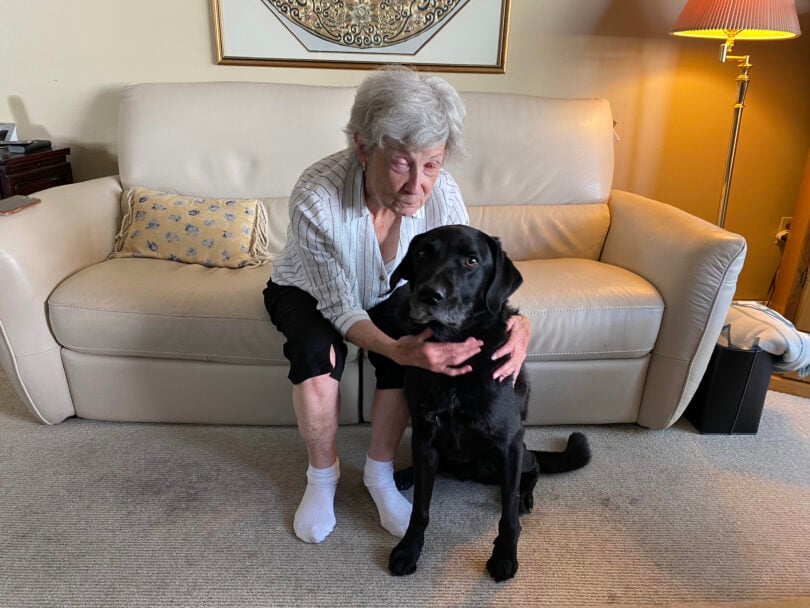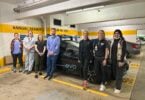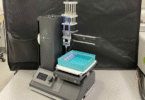Canadian medical history has been made at Mount Saint Joseph Hospital in Vancouver.
Three completely blind patients who underwent surgeries in which their own tooth was placed on one of their blind eyes can now see to different degrees.
They are the first patients in Canada to undergo the operation, performed by a team at Mount Saint Joseph, operated by Providence Health Care.
Gail Lane is one of them and she is overjoyed.
The first of the three to have the two-part Osteo-odonto Keratoprosthesis (OOKP) or tooth-in-eye surgery, the 75-year-old lost her sight when she was 64. Anti-seizure medication she had taken sparked an auto-immune disorder called Stevens-Johnson Syndrome, which severely scarred her corneas and left her sightless. It was a shock for someone who had been able to see for her entire life until then.
Regaining sight a gradual process
After her surgeries were completed in late May, her sight did not return immediately, as it has with some patients in the several other countries that offer the complex procedure. She tried not to get too disappointed, realizing healing was an individual thing.
“For the first two weeks I would just see … an increase in the amount of light in my left eye,” recalls the Victoria resident. “Then that started to increase, and I could start seeing some larger objects, but in a fuzzy way.”
Then in mid-July, she noticed an improved ability to perceive both the definition, type and size of things and people. The black lab guide dog of her partner Phil (he is blind too), was the first object she could truly see.
Seeing her partner for the first time
“I could see Piper’s tail wagging and then gradually the rest of his whole body came into view,” says Lane. “That was wonderful.”
And then, an emotional moment – “I started to see Phil too.”
She can see flowers, plants, grass and bright colours of clothing and other objects like cars.
And she can see the eye surgeon and ophthalmologist who led these three surgeries, Dr. Greg Moloney. When strong sample glasses he provided to her at his 16th-floor clinic brought him into view, she put her hands on his cheeks with gratitude. She could make out small details in Vancouver’s False Creek below, such as boats on the water and cars on streets. Staff and the doctor teared up.
Surgery is complex, specialized and rare
This rare, highly specialized eye surgery, pioneered by Italian ophthalmologist/surgeon Benedetto Strampelli in the 1960s, inevitably makes people do a double take when it’s described.
In the first of the two separate surgeries, the patient’s own tooth (the eye tooth, coincidentally) is removed and an artificial lens is inserted into its centre. Surgeons then implant it into the outside of the cheek. For the next three months, tissue grows around it to enable surgeons to anchor it over the eyeball. Stitching the hard enamel of a tooth into an eye without the covering would be impossible.
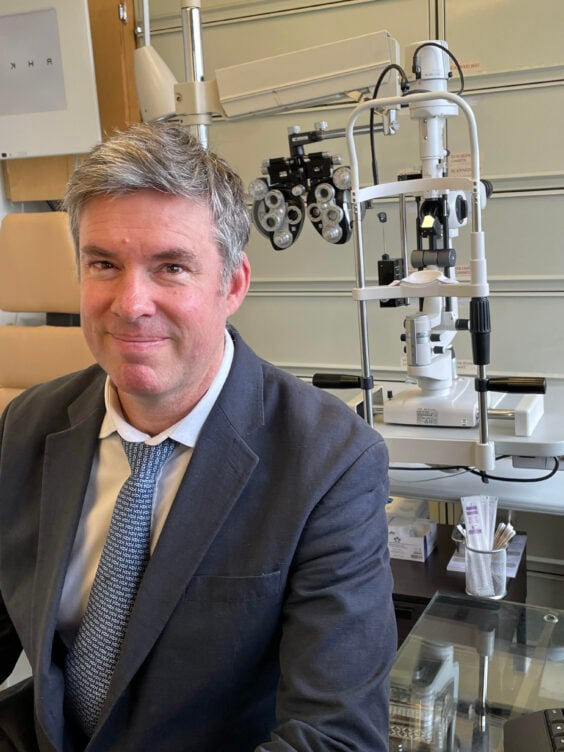
Lane had that surgery in February. In May, her tooth was removed from the cheek pocket, then inserted into her left eye during a five-hour procedure.
Meanwhile, North Vancouver resident Brent Chapman, 34, and a third patient from outside BC (who declined to be interviewed for this story), also had their surgeries.
Each patient’s recovery different
Remarkably, the third patient was able to see the day after his final surgery and could even read documents. Chapman, who lost sight as a teen, had a remarkable 20/30 vision about a week later with corrective lenses and was ecstatic. However, with healing, the lens/tooth has since become misaligned, so visual signals are not reaching his healthy optic nerve and retina properly. He will receive a minor surgery to set the lens back in place, and Dr. Moloney says he expects a good outcome.
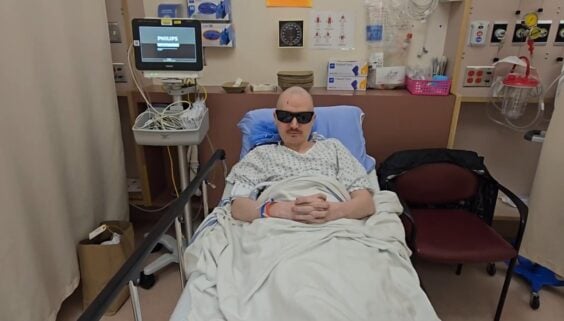
With prescription glasses, Lane’s sight was recorded at 20/50, says Dr. Moloney.
The surgeon has performed eight tooth-in-eye operations in his native Australia, where he learned them, before being recruited to Mount Saint Joseph four years ago for patients needing the procedure in Canada.
“I am so proud of the surgical team, nursing and hospital staff that made these surgeries possible,” he says.
He is also thankful to St. Paul’s Foundation, which raised $430,000 to fund the OOKP clinic for three years to support start-up costs, training, equipment, and yearly operating expenses.
“Our first big goal was to finish the surgeries without complications and have the back of the (patients’) eye healthy enough for them all to see again. We did that. The next goal is to make sure the prosthetics (teeth) are viable in the long term.”
The joy of regaining independence
Lane is rediscovering how much easier life becomes with her sight. “I don’t have to call a (volunteer) service Be My Eyes app as often to see if my socks match… or that my top and pants match.”
“I can eat (at a restaurant) without embarrassing myself,” she adds.
She says as a blind person, she would put a fork of salad to her mouth only to discover there was none on it. “If I put it up to my mouth, salad is so light I can’t feel it on the fork.”
She concentrates on the small gains she is making. “I’m trying to be in the day. I am looking forward to being more independent, (such as) being able to walk a few blocks to the store to pick up something without depending on somebody else helping me.”
She is eager to return to playing mahjong with her friends and reading books rather than listening to audio versions.
Surgery is “like a miracle”
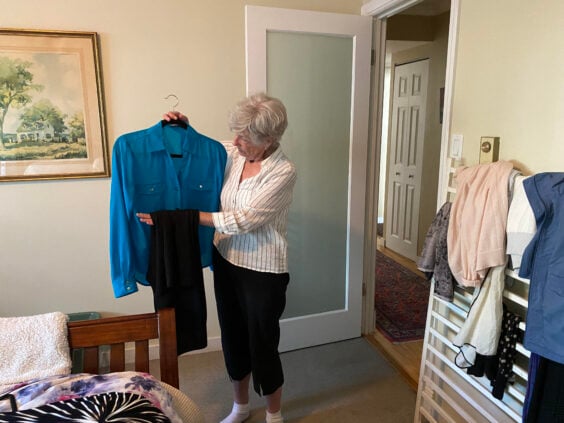
Lane becomes weepy as she recalls the care she received throughout the gruelling and lengthy process that started over a decade ago.
“It was a long, long road and I couldn’t have done it without the medical team and all my family and very good friends. It was a hard path at times. It’s a special and rare procedure, but it’s a wonderful thing.”
“It’s like a miracle to me.”
For his part, Dr. Moloney commends the trio of patients for their forbearance, knowing that this surgery was their last resort in the long, sometimes desperate quest to see again. “They have gone through huge highs and lows,” he says. “It’s been very emotional for all of them.”
By Ann Gibbon
For Providence Health Care

